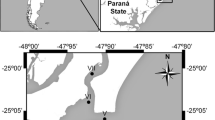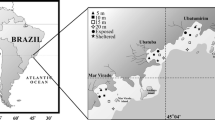Abstract
Horseshoe crabs act as moving substrata for simple to complex communities of small marine organisms. Amplexed adult pairs migrate for breeding once every 2 weeks from deep waters towards nearshore waters during highest high tide. Female horseshoe crabs bury themselves to the level of the lateral eyes to deposit eggs while the male crabs fertilize them. Subsequently eggs are buried by the female. Tachypleus gigas (Müller) is the most abundant horseshoe crab species above available along the Orissa coast (India). Adults reach terminal anecdysis once sexually mature and live with their carapace for 4 to 9 years. In spite of this, epibiosis is limited. In the current investigation, differences in the epibiotic community (diatoms and macro-epibionts) present on horseshoe crabs, according to gender, were evaluated, and the macro-epibiont population from different regions of the carapace was mapped. In general, female horseshoe crabs harbored fewer epibionts than the males. Among the diatoms, Navicula spp., Nitzschia spp. and Skeletonema sp. were dominant in both sexes. However, the abundance and diversity of diatoms was greater on the carapaces of male crabs. Among the macro-epibionts, the acorn barnacle (Balanus amphitrite Darwin) and encrusting bryozoan (Membranipora sp.) were the most dominant forms. Barnacles and bryozoans were greater in abundance in the “rough” zone (cardiopthalmic region and anterior region of the opisthosoma). Mapping of the macro-epibionts from different regions of the carapace revealed differential distribution in males and females. Such differentiated distribution of the macro-epibionts can be related to factors such as changing habitat by the horseshoe crabs during breeding, mechanical abrasion and surface availability during mating and nesting periods, requirements of epizootic larvae and surface properties of the carapace (wettability and roughness). In the case of females, mechanical abrasion and surface availability played an important role in the epibiotic community structure and distribution patterns. The surface wettability measurements indicated male carapace to be slightly more hydrophobic than the female carapace. Scanning electron microscopy revealed that the male carapace was comparatively rough compared to the smooth carapace of females. A comparison of surface properties of the carapace indicated that the male carapace is more conducive for epibiosis.
Similar content being viewed by others
Author information
Authors and Affiliations
Additional information
Received: 23 August 1999 / Accepted: 25 January 2000
Rights and permissions
About this article
Cite this article
Patil, J., Anil, A. Epibiotic community of the horseshoe crab Tachypleus gigas . Marine Biology 136, 699–713 (2000). https://doi.org/10.1007/s002270050730
Issue Date:
DOI: https://doi.org/10.1007/s002270050730




